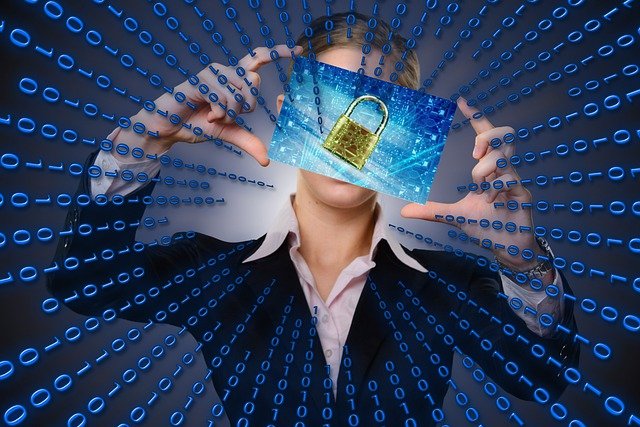Cyberattacks have become a major worry for organizations, from SMBs to huge multinationals, in today’s fast-changing digital economy. The trend toward remote work amid the COVID-19 epidemic has enabled the rapid expansion of digital crimes. As attacker habits develop, the cyber threat picture is growing more frightening.
That’s why the public and commercial sectors worldwide are putting a premium on protecting their IT networks and systems.
Cybercriminals are going after all sizes and kinds of businesses, so even a small local business in a faraway region might incur considerable losses due to a well-executed cyberattack. Huge companies face a similar, severe threat, including the possibility of bankruptcy.
What should you keep in mind to ensure the safety of your network? Here are some of our top recommendations for minimizing digital threats and protecting quest infrastructure.
Why should your IT infrastructure be secured?
IT infrastructure includes a wide range of software and hardware technological assets. Among these are external and internal networks and local and remote computers.
Your company’s IT infrastructure is its backbone; it stands to reason that it should be safeguarded as best as possible from the myriad cyber security risks. With this method in place, you can be assured that your business’s intellectual property and procedures will be secure.
How should you protect your IT infrastructure?
Is there a list of recommended procedures for securing an IT network? To sum up, here it is.
- Create and implement an effective cybersecurity policy.
You can’t keep your infrastructure safe unless you’re aware of the threats and have a plan to deal with them.
The first step should be to develop security policies that are specific to the following:
- The specifics of your industry
- Your company’s specific operations
- The skills and expertise of your employees
Passwords and other user credential details for employee and administrative access to your systems, content filtering procedures, and the like should be governed by your policy’s explicit standards. Roles and responsibilities (such as security engineers, security architects, etc.) for dealing with cyber risks should also be spelled out.
- Make use of tried-and-true software and hardware.
The allure of free or low-cost software and hardware is strong. However, there are covert dangers associated with that decision.
In order to select solutions that already have an efficient security mechanism built in, verified software and hardware should be used (albeit this does not come cheap). It is also recommended that you avoid downloading software from untrusted sites (gray market products). They might infect your computer with malware and give hackers access to your private information.
3: Keep your systems updated
Every day, there are brand new cyber threats. Adding additional safeguards for each individual might make it difficult to remain on top of them. Software platforms update and improve existing security measures as new vulnerabilities are uncovered.
If, for instance, a new SSL vulnerability is found in the Firefox browser, the developers of Firefox will quickly release a security patch to fix it. It is important to update browsers quickly so your system can benefit from the latest security patches.
For this reason, it’s crucial to update your software regularly. The next best thing is for your system admins to be constantly informed of major software upgrades so they can implement them when necessary.
- Safeguarding Network System
Your infrastructure can’t function without the devices in your network. Their security has to be prioritized, as it is the cornerstone of efficient network administration.
To ensure the safety of your most essential gadgets, it is essential to remember the following:
- Always require encryption while using a network, including wireless ones.
- Verify that all users and administrators have the appropriate permissions (access management)
- Implement multi-factor authentication and use strong passwords.
- Control who may access what on your network (physical security)
- You should create a configuration backup.
- Keeping an eye on the dials and settings of security systems 24/7
- Use proper network segmentation.
Once attackers have gained access to your systems, network segmentation is crucial for minimizing the damage. Because of this, the division of duties is an essential procedure for protecting your network’s architecture.
Both hardware partitions like routers and digital partitions like firewalls may be used to create useful segments. Installing “switches” that can be switched off if an attacker gains access to the network, such as internal routing and similar, is important to designing a secure infrastructure plan.
In this way, the effects of an assault can be contained inside a single area rather than spreading over the whole network.
- Don’t overlook firewalls
Your cybersecurity approach would be incomplete without firewalls. Still, many organizations overlook the importance of a network-level firewall.
It’s crucial to install firewalls on all devices employees use, but it’s also important to safeguard the overall network. Therefore, installing a hardware firewall and packet-filtering firewall is strongly suggested. It’s like an insurance policy for your network.
- Provide cybersecurity training for your employees
If hackers can find ways into a system by human error, no amount of software or hardware protection can save it.
The best way to ensure the safety of your IT infrastructure is to provide your staff with the training they need to deal with any type of attack. In addition, if you take the time to teach your employees how to spot potential dangers, you can ensure their safety and your company’s safety.
Essential components of effective cybersecurity training for employees include:
- Educating yourself on the most pressing cyber dangers, such as phishing, remote access, social engineering, protecting administrator credentials, and related issues
- Initiating a procedure for identifying and reporting dangers (for example, links and emails sent by cybercriminals)
- Securing conversations among colleagues or employees



